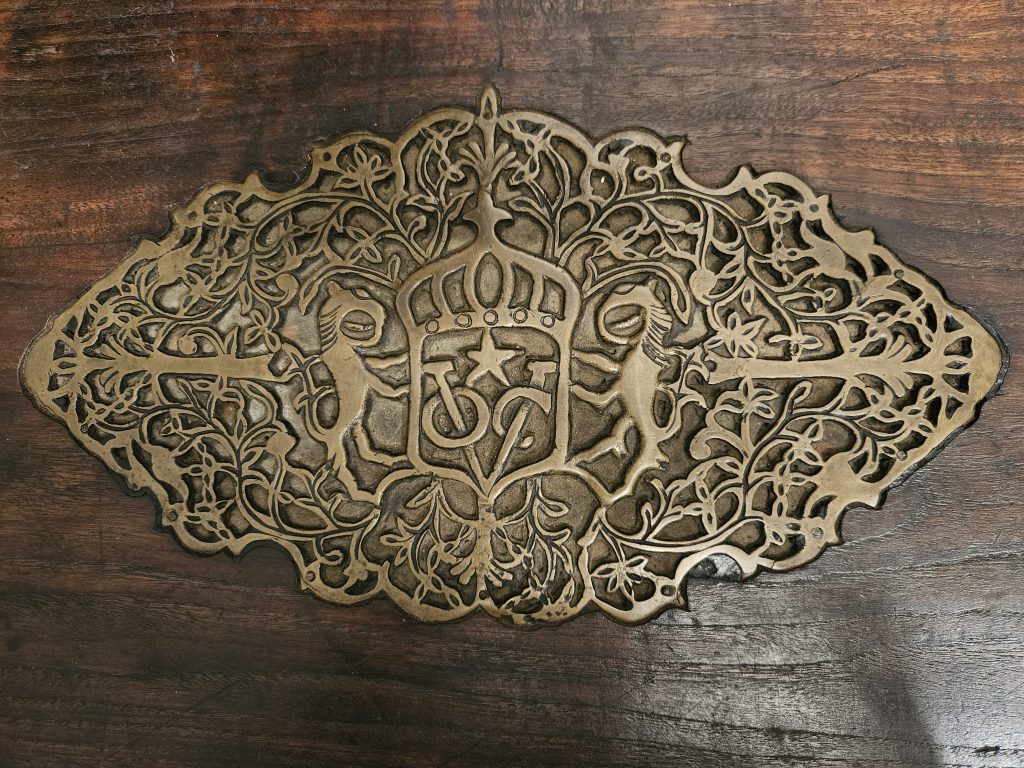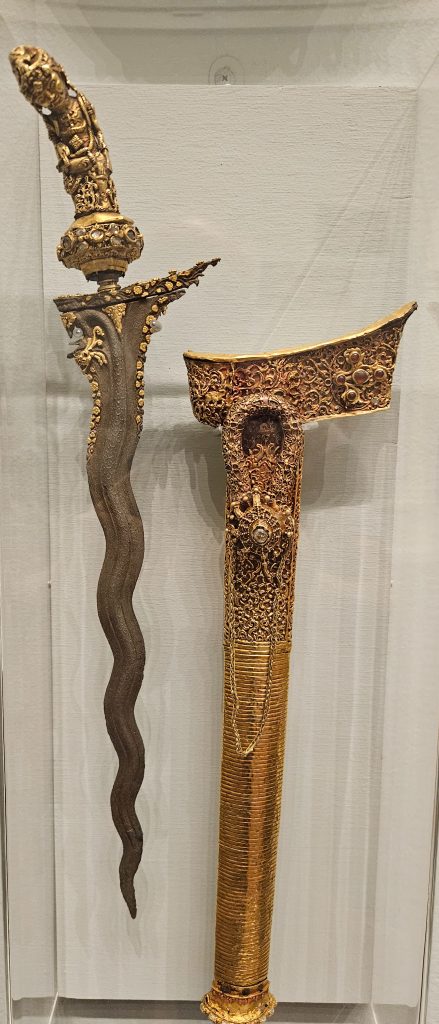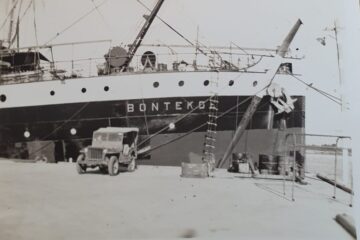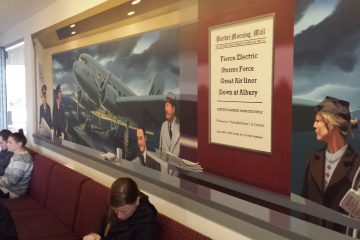The Vereenigde Oostindische Compagnie (VOC) played a significant role in the exploration and early history of Australia. The relationship between the VOC and Australia can be understood through several key points:
Exploration and Mapping: Dutch explorers were among the first Europeans to contact the Australian continent. In, Willem Janszoon, sailing for the VOC, became the first recorded European to set foot on Australia’s northern coast. Later explorers, such as Dirk Hartog in and Abel Tasman in and, further explored and mapped parts of the Australian coastline.
Terra Australis Incognita: The Dutch called the newly discovered land “New Holland” or “Terra Australis Incognita,” and they made several expeditions to explore and chart its coastline. However, they did not establish a permanent settlement in Australia during this period.
Trading Posts: The VOC established a network of trading posts and settlements in the East Indies (modern-day Indonesia) to support its lucrative spice trade. Some of these outposts were used as stopovers for VOC ships traveling between the Dutch Republic and the East Indies. These stopovers occasionally brought Dutch ships along the western coast of Australia.
Early European Contacts: The VOC’s presence in the East Indies and its maritime activities in the Indian Ocean brought Dutch ships into contact with Indigenous peoples along the Australian coast. However, these contacts were often limited and did not result in significant interactions or settlements.
Influence on Nomenclature: Dutch explorers and cartographers made important contributions to the naming of various geographic features in Australia. For example, Cape Leeuwin, Cape York, and the Gulf of Carpentaria are named after places and people associated with the VOC.
Limited Permanent Settlement: While the Dutch explored and mapped parts of Australia, they did not establish permanent settlements or colonies on the continent. Their primary focus remained on the spice trade in the East Indies.
Ultimately, the VOC’s relationship with Australia was primarily exploratory and limited to coastal exploration, rather than colonisation. It was the British who later established the first European colonies in Australia, beginning with the arrival of the First Fleet at Sydney Cove in , marking the start of European settlement and colonisation of the continent.
Australian VOC legacies
• The oldest existing European document created in Australia is an inscription on a pewter plate left nailed to a post on Dirk Hartog Island by Dirk Hartog, Captain of the Eendracht on 25 October 1616. This plate is now in the Amsterdam Rijksmuseum in the Netherlands.
• The first regional map to show part of Australia was the Gerritszoon Map, published in 1622. It showed the part of Cape York charted in 1606 by Willem Janszoon in the Duyfken.
• The first recorded birth of a European in Australia took place in 1623, on board the Leyden, which was charting Western Australia’s coastline at the time. Willemtgen Janszoon gave birth to a son.
• The first book written referring to Australia was Samuel Purchas’ Hakluytus Posthumus or Purchas His Pilgrims Contayning a History of the World, in Sea Voyages and Lande-Travells by Englishmen and Others … , published in 1625 (p.385).
• That the first armed conflict between Europeans in Australian history occurred during the Batavia Mutiny in 1629 on the Abrolhos Islands off the Western Australia. A group known as the Defenders held out on West Wallabi Island, against the mutineers.
• Wiebe Hayes, who led the Defenders resistance against the mutineers during the Batavia Mutiny, is arguably the first acknowledged “hero” in Australian history. A monument has been erected to him in Winschoten, his home town in The Netherlands.
• The first murders of Europeans by other Europeans, the first mutiny and the first recorded rape all occurred in the course of the Batavia Mutiny between June and September 1629.
• The first trials ( legal review) in Australian history occurred as a result of the Batavia Mutiny in the Wallabi Group of the Abrolhos Islands in October 1629. This resulted in 7 men being hanged (after some had hands chopped off) on 2 October 1629, the first recorded executions in Australian history.
• The Batavia Mutiny also saw in the first clergyman and the first European women setting foot on Australian soil.
• The first report of the black swan was in 1636. Antonie Caen, sailing in the Banda, reported seeing “two stately birds as large as swans, which had orange yellow bills and were almost half a yard long” as they passed by Bernier Island just north of Shark Bay.
• The first circumnavigation of Australia was by Abel Tasman, in the course of his two voyages to Australia in 1642 and 1644.
• The first book about an Australia subject was Ongeluckige Voyagie van’t Schip Batavia, published in 1647. It was about the Batavia Mutiny and was a bestseller.
• The oldest European structures in Australia were built in 1629, on the Abrolhos Islands, where they still exist. They include the “fort”, a defensive position consisting of two adjoining sections about ten metres by three metres, built with dry-stone walls about one metre high.
• Australia’s oldest “prison”, which is still standing, can be found on Beacon Island in the Abrolhos Islands, again the result of the Batavia Mutiny in 1629. It is a shallow pit with a low wall of piled rocks. It was built to hold Jeronimus Cornelisz, the instigator of the Batavia Mutiny.
• The first written description of an Australian marsupial was of the tammar wallaby, found on West Wallabi Island. Pelsaert recorded the description in his journal on 15 November 1629 as he departed the Abrolhos Islands following the Batavia Mutiny.
• The first European residents in Australia were Wouter Loos and Jan Pelgrom de Bye. They were marooned on the west coast on 16 November 1629 as punishment for their part in the Batavia Mutiny.
• The first depiction of the black swan was an engraving published in Valentijn’s Oud en Nieuw Oost Indien in 1724-26,
• Torres was the first to sail through Torres Strait in 1606 with his ships San Pedro and Los Tres Reyes. It was not until 1756, 150 years later, that the next voyage through the Strait took place, when the Dutch ship Rijder, captained by Gonzal, sailed through and back again, without realising they had done so.
• The first water-colour drawings of Australia were done in 1696-7 by Victor Victorszoon who was on board the Geelvinck during Willem de Vlamingh’s voyage to the Southland. Victor drew coastal profiles of seven parts of the Western Australian coast.
• The first sailing boat built in Australia was the Sloepie in 1727. This was constructed by the survivors of the Zeewijck, wrecked on the Abrolhos Islands, from the wreckage of their ship. They managed to sail back to Java in it and thus save themselves.
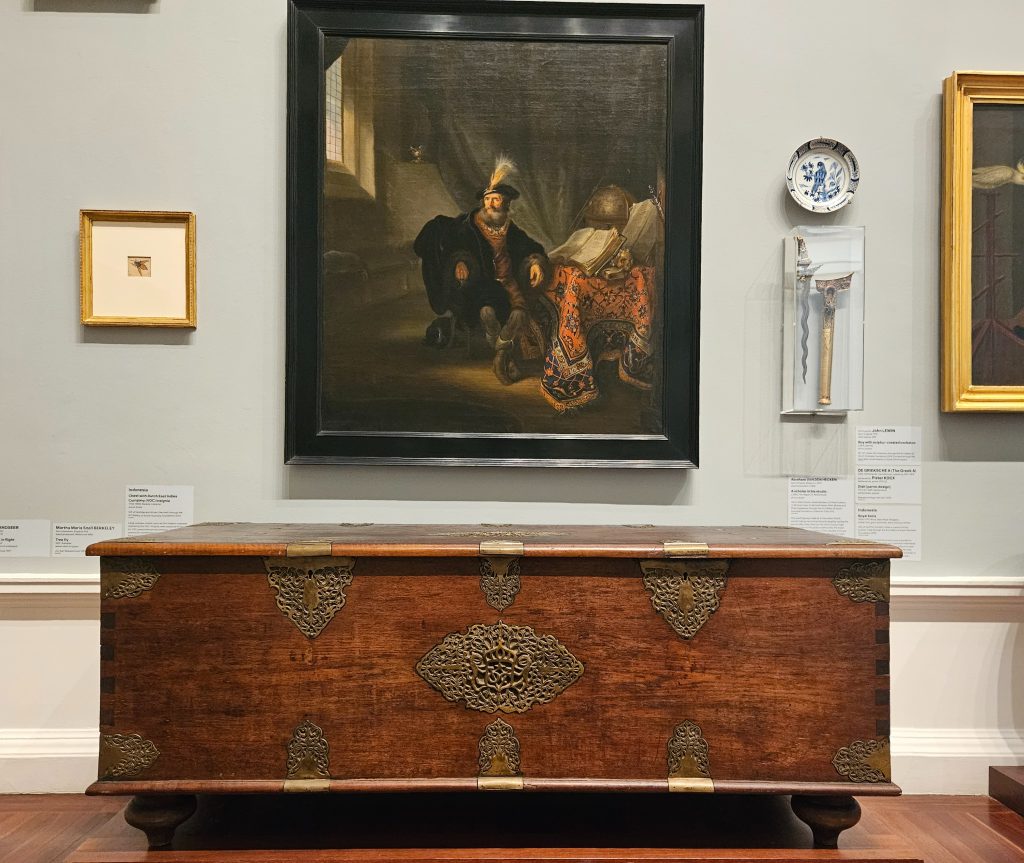
Chest with Dutch East Indies Company (VOC) insignia 1700-1800, Batavia (Jakarta) wood, brass
Gift of Andrew and Hiroko Gwinnett through the Art Gallery of South Australia Foundation 2015
Large wooden chests, such as this majestic example displaying the VOC insignia, were essential furniture for VOC personnel serving overseas, with staff commonly transferred across postings. Similar chests have been found in former Dutch colonies, including South Africa and Sri Lanka, indicating their widespread use. The chest’s lock is fitted with a bell that rings when the key is turned. This was to deter unwarranted persons accessing the contents.
Painting: Abraham VAN DEN HECKEN born Antwerp, Belgium c.1615 died Amsterdam c.1669
A scholar in his studio c.1655, The Hague (?), Netherlands oil on canvas.
Gift of Kathy Booth, Anne Davidson, Dr Peter Dobson, Dr Michael Drew, Dr Michael Hayes, Peter McKee and Philip Speakman through the Art Gallery of South Australia Foundation Collectors Club 2012
This painting was made at a time when Dutch society had grown extraordinarily wealthy during the period often described as the Dutch Golden Age. The inclusion of the globe underscores the Asian and Middle Eastern origins of the valuable and rare objects found in the scholar’s studio. On the right of the composition is an Indonesian dagger whose figurative hilt is similar to the style of the seventeenth-century Makassan keris on display. In 1669 the Dutch conquered the sultanate of Makassar, in what is now Indonesia. This was contemporaneous with the Makassan voyages to a land called Marege, now known as northern Australia.
